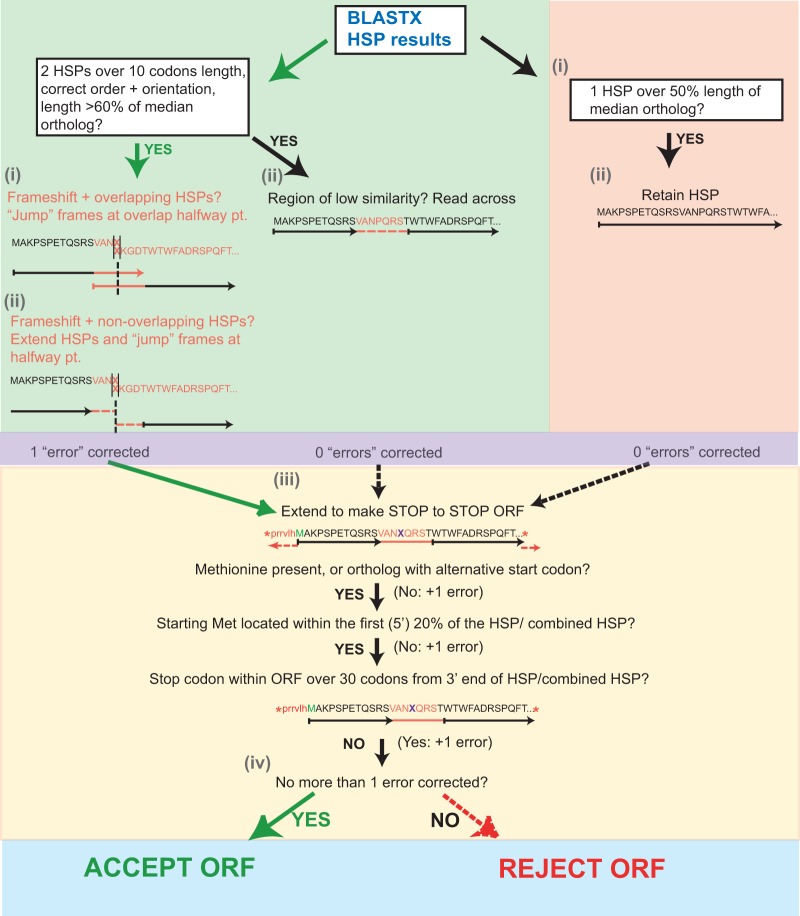FIG 2.
Flowchart illustrating the process by which ORFmaker identifies and accepts a stop-to-stop ORF. (i and ii) If the BLASTX search produces two HSPs of sufficient cumulative length that are in the correct orientation and order, ORFmaker attempts to create a single ORF spanning both by reading across between the HSPs or by correcting a frameshift. If a single HSP of sufficient length is produced by the BLASTX search, this is retained. (iii) The construct is extended outward from each direction until a stop codon is reached, creating a stop-to-stop ORF. The ORF is tested for errors such as the location of the starting methionine and the presence of premature stop codons. (iv) ORFmaker accepts ORFs with a single error, whether it is a frameshift, a premature stop, or a lack of start, to allow for the possibility of a sequence error. ORFs with two or more errors are rejected. In instances where an ORF passing the criteria can be made using a single HSP or a two-HSP construct, the ORF producing the highest BLASTP bit score against its orthologs when translated is retained.

